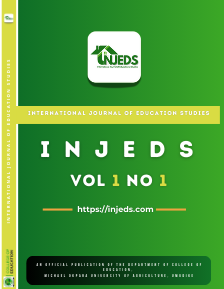Effect of Computer Simulation Assisted Instruction on Secondary School Physics Students’ Achievement in Abia State
Keywords:
Achievement, Computer Simulation , Learning plateauAbstract
Pre-test post-test quasi-experimental research design was employed to investigate the effect of Computer Simulation Assisted Instruction strategy on achievement of students in physics. The population of the study was 3480 (SS2) Physics students from all the 225 coeducation public secondary schools in Abia State. A simple random sampling was used to sample 93 Senior Secondary School II (SS2) Physics students from two intact classes which were grouped into Experimental and Control Groups. The Experimental Group was exposed to Computer Simulation Assisted Instruction (CSAI) while the Control Group was exposed to Traditional Lecture Teaching Method (TLTM). Two research questions and two hypotheses guided the study. The instrument for data collection was Physics Achievement Test (PAT); subjected to test of reliability using Kudar Richardson formula 20 (KR – 20), and a reliability coefficient of 0.82 was obtained. Mean and standard deviation scores were used to answer the research questions and analysis of covariance ANCOVA at (0.05) level of significance was used to test the hypotheses. It was found that although there was no statistically significant difference between the mean achievement scores of students taught physics with CSAI and TLTM, CSAI enhanced students’ achievement in physics more than the TLTM. The study also revealed that there was no statistically significant interaction effect of teaching strategies and gender on students’ achievement in Physics when taught with CSAI and TLTM. It is therefore recommended that teachers should adopt CSAI in the teaching and learning of Physics.





